How do the Middle Ages inspire contemporary creation ?
The exhibition Summon the Chimeras: Medieval Heritage in Contemporary Art brings together some fifteen contempororay artworks carefully positioned throughout the museum's normal visitor route. Their fantastical universes carry on the legacy of the medieval predilection for the hybrid and outlandish figures that inhabit our imaginations, tinged with the sense of heroic fantasy that is a frequent gateway to the Middle Ages, an often-romanticised era.
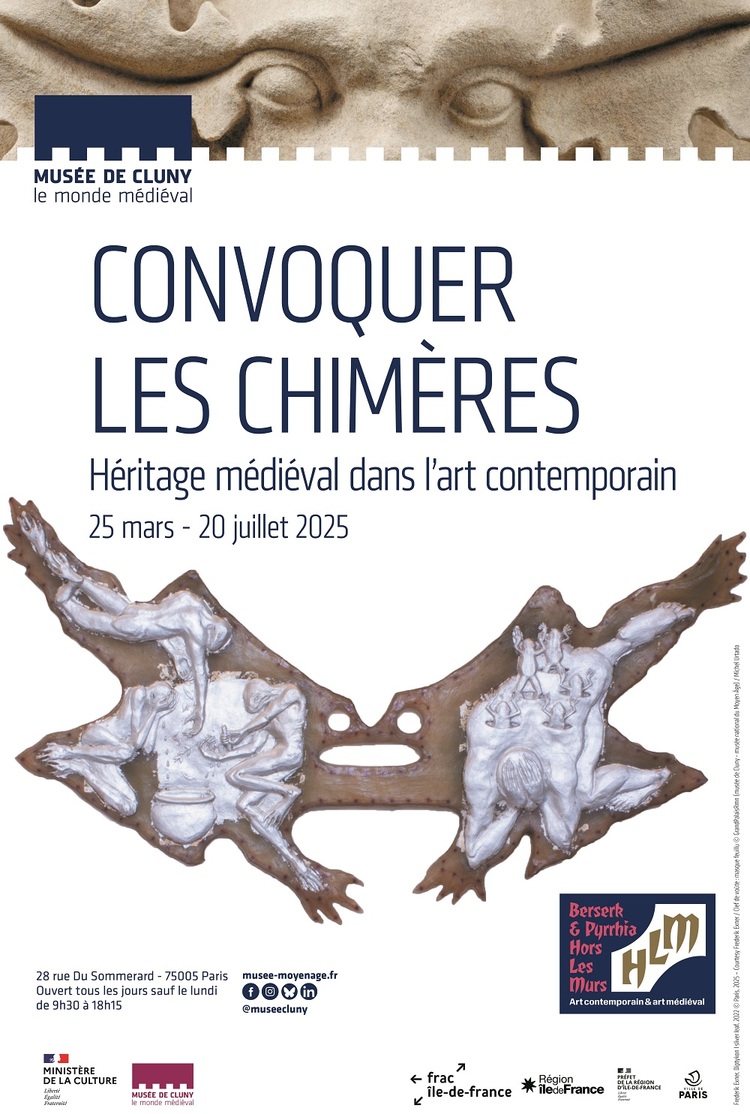
This exhibition is part of the Berserk & Pyrrhia, art contemporain et art médiéval programme being offered by the Fonds régional d’art contemporain Île-de-France (Île-de-France Regional Contemporary Art Fund).
Find more information in the press kit.
You can also consult the introductory text and the labels of the exhibition in English.
The Musée de Cluny is hosting an exhibition on medieval carved decorations from the Notre-Dame Cathedral in Paris.
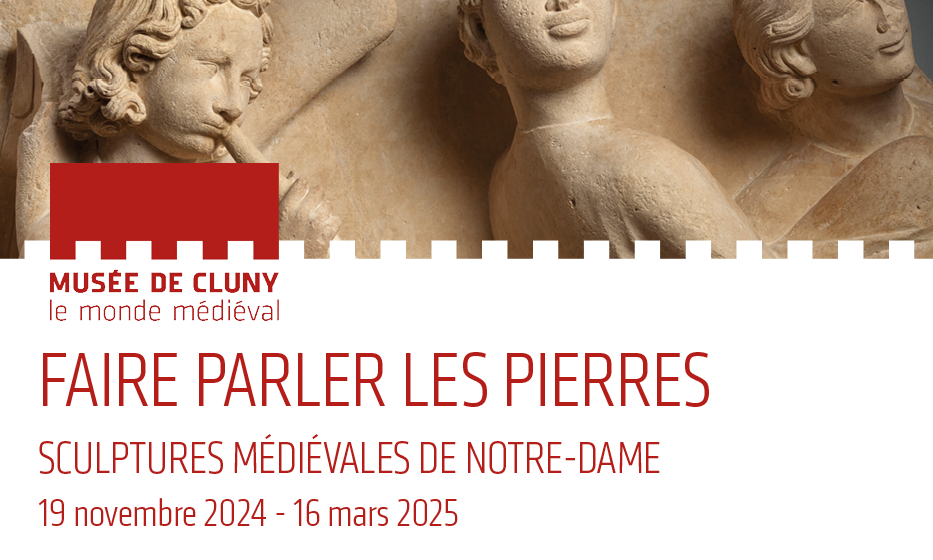
Not since the early 1980s have cathedral sculptures in storage at the museum been the subject of such in-depth research. The exhibition “Making Stones Speak. Notre Dame’s Medieval Sculptures” vows to deepen our knowledge on these collections by revealing the findings of a major research and restoration programme, underway since 2022.
The exhibition "Making Stones Speak: Medieval Sculptures of Notre-Dame" is organized by the Musée de Cluny in exceptional partnership with the INRAP (French National Institute for Preventive Archaeological Research).
It bears the label "Notre-Dame de Paris: Towards Reopening," coordinated by the public establishment Rebâtir Notre-Dame, project manager for the restoration work.

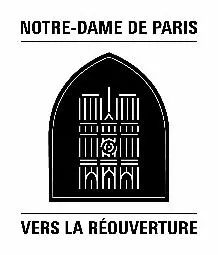
Curatorship :
Damien Berné, Chief Curator at the Musée de Cluny, Head of Sculptures
The Musée de Cluny extends its heartfelt thanks to the numerous donors for their generosity in supporting this exhibition, in particular:
Famille Christian Giacomotto - CEGER, Famille C. Herrault, Cécile et Michel Picaud, Ariane et Lionel Sauvage, Barbara Drake Boehm et Michael J. Porcelli, Bart Friedman et Wendy Stein, Russell Kelley,
as weel as The Ruddock Foundation for the Arts, qui a apporté son soutien au catalogue de l’exposition,

and the Friends of Notre-Dame de Paris for their valuable contribution.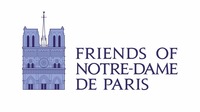
![]()
![]()

![]()
![]()
Press kit available here.
The history of Notre-Dame cannot be solely defined by its famous building: it has also been shaped by books, manuscripts and prints which were used for worship or study.
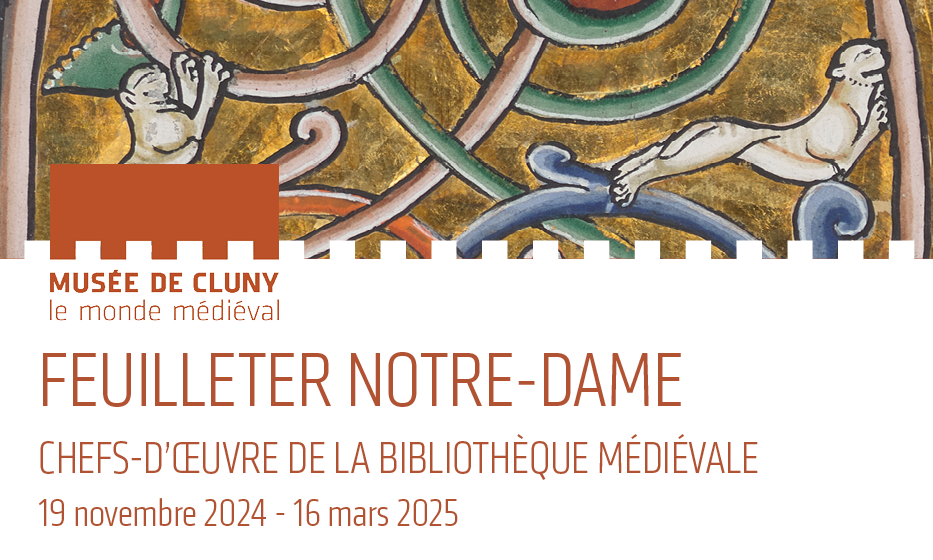
From 19 November 2024 to 16 March 2025, the Musée de Cluny – Musée National du Moyen Âge in Paris is deep diving into the Bibliothèque nationale de France (BnF) collections for the ‘Feuilleter Notre-Dame. Chefs-d’œuvre de la bibliothèque médiévale’ (Leafing through Notre-Dame. Masterpieces of the Medieval Library) exhibition, organised in collaboration with the BnF.
Curatorship :
Charlotte Denoël, Chief Curator, Head of the Medieval Manuscripts Department at the National Library of France with scientific assistance from Éric Landgraf, Head of the Documentation Department at the Musée de Cluny - National Museum of the Middle Ages
The exhibition is organized by the National Library of France (BnF) at the Musée de Cluny as part of the "Dans les collections de la BnF" program with the participation of the National Archives.
![]()


Check out the press kit here.
The Treasure of Oignies, recognised since 1978 as one of the Seven Wonders of Belgium, is leaving its home country almost in its entirety for the first time. From 19 March to 20 October 2024, the Musée de Cluny – musée national du Moyen Âge is presenting these pieces of gold and silversmithery in an exhibition entirely dedicated to them.
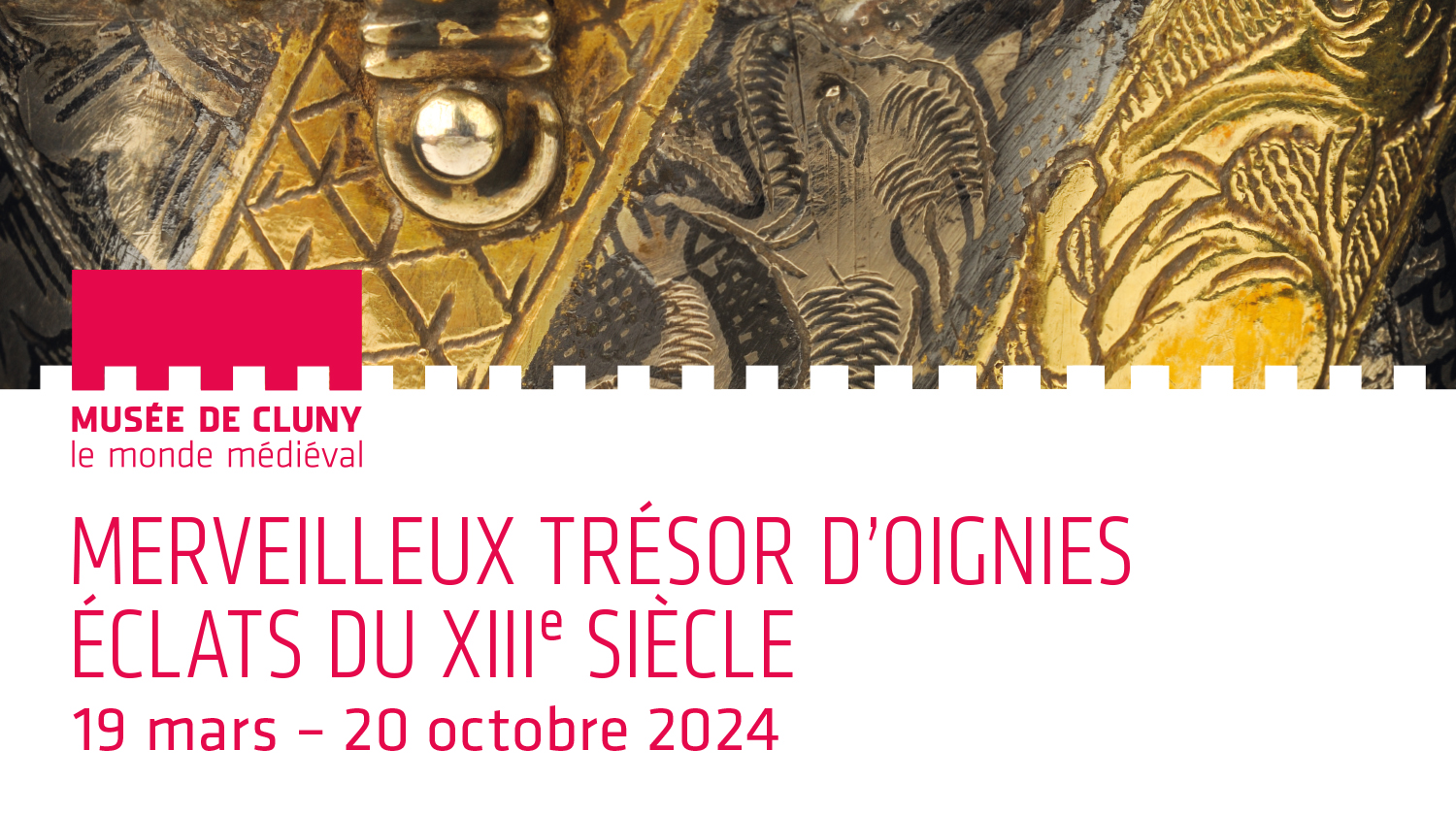
The exhibition “The Wonderful Treasure of Oignies : 13th Century Sparks of Brilliance” is presented at the Musée de Cluny in the current events room. The curators are Christine Descatoire, Chief Curator at the Musée de Cluny, responsible for the gold and silversmithery collection, and Julien De Vos, Chief Curator, Director of the Cultural Heritage Department of the Province of Namur.
It is organised with the support of the King Baudouin Foundation, which owns the Treasure of Oignies.
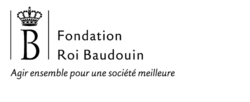



Read the press kit here.
Under the reign of Charles VII, art experienced an extraordinary rebirth. The exhibition “Arts in France during the time of Charles VII (1422-1461) ”, presented from 12 March to 16 June 2024, highlights this pivotal moment in the history of art.
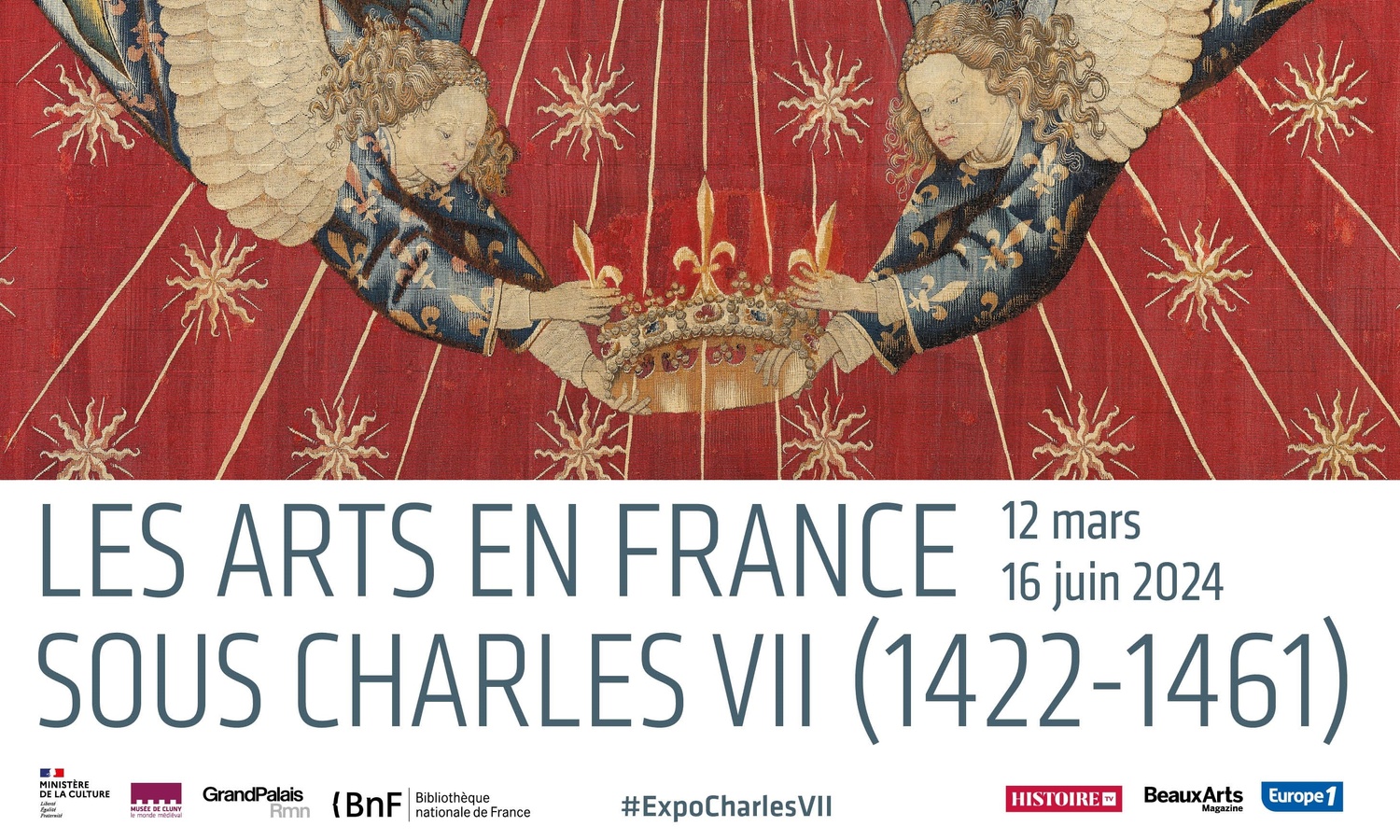
The exhibition “Arts in France during the time of Charles VII (1422-1461)” is organised by the Musée de Cluny – Musée National du Moyen Âge and the GrandPalaisRmn.
Several curators from major national institutions have been brought together for the exhibition, including Mathieu Deldicque, Chief Heritage Curator, Director of the Musée Condé in Chantilly, Maxence Hermant, Chief Curator at the Bibliothèque nationale de France, Department of Manuscripts, Medieval Manuscripts Collection and Sophie Lagabrielle, Head Curator at the Musée de Cluny, in charge of paintings, stained glass and graphic arts. Séverine Lepape, Director of the Musée de Cluny and Head Conservator, is the Chief Curator.
The exhibition is organised with the exceptional collaboration of the Bibliothèque nationale de France.
It is supported by The Selz Foundation, The Ruddock Foundation for the Arts, the Fondation Etrillard and The New York Medieval Society.
![]()

Read here the press kit.
Rock crystal has fascinated every civilisation since time immemorial for its mysterious translucence. The Musée de Cluny – Musée National du Moyen Âge takes visitors on a journey through the history of crystal from the present day to the Middle Ages and beyond.
During medieval times in particular, this colourless quartz was a much coveted material for making tableware and other precious items such as decorative objects and jewellery. Due to the rock’s purity, crystal has also been endowed with powerful symbolic meaning expressed through the production of liturgical pieces and reliquaries.
Organised by the Musée de Cluny – Musée National du Moyen Âge and the Réunion des Musées Nationaux – Grand Palais, with the special participation of the Musée du Louvre, the exhibition features works from Musée de Cluny and objects on loan from national and international institutions. The exhibition is supported by L’ÉCOLE, School of Jewelry Arts.
Read here the press kit.
A summary of recent research, the exhibition "Toulouse 1300 - 1400. The emergence of the southern gothic" depicts a unique inventory of creativity in Toulouse in the 14th century.
In particular, the exhibition features four statues from the Rieux chapel, masterpieces of 14th century polychrome sculpture. Toulouse miniatures will also be in the spotlight thanks to some fifteen illuminated leaves and manuscripts.
More than 80 works are on display, showing the richness of Toulouse's creative output during this period, as well as the back-and-forth of influences between Toulouse, Avignon and the Pyrenean valleys.
The exhibition is organised by the Musée de Cluny and the Réunion des musées nationaux - Grand Palais. It has benefited from an exceptional loan from the Musée des Augustins in Toulouse.
The enrichment of the museum's collections is an essential mission. This exhibition looks at the 43 works acquired over the past six years. Most of these sculptures, paintings, illuminations and textiles are presented here for the first time.
The exhibition presents an exceptional work, recognised as being of major heritage interest and currently being acquired by the museum. This crucified Christ by Giovanni Pisano is a true masterpiece of Italian art from the 1270's and is being exhibited here for the very first time in France.
As a complement to the presentation “Treasures”, team of curators at the Cluny museum wished to shine a spotlight on another aspect of medieval artistic production: objects from everyday life.Organised around several themes – medieval households, art of the table, religious devotion, care of the body, toys and games, measuring instruments, and reading and writing – these objects offer glimpses into how people in medieval society spent their hours and days.
Be they luxury items conceived for an aristocratic elite or common objects destined for more modest folk, their functions seem surprisingly close to ours, responding as they do to material and human needs that transcend the centuries. Nevertheless, it is worth digging a little deeper. A distinguishing feature of medieval furniture is that it was easily transportable, for the wealthiest classes were often on the move. Plates and forks were missing from medieval tableware, which often consisted of ceremonial pieces in affluent households.
The games and toys on display serve as a reminder that entertainment was an important part of medieval society, while books and writing instruments were the preserve of a small privileged class. Clocks and watches, astrolabes and weights bear witness to units of measure that were different from those we use today, and a relationship to time that was not yet standardised. Lastly, carefully-crafted toiletries reveal the importance of hygiene in the Middle Ages and indicate that these objects were preciously guarded for use over a lifetime.
Read here the press kit.
October 24, 2019 - January 20, 2020
Embroidery in silk, gold and silver thread was one of the most highly valued and prestigious arts of the Middle Ages. And yet, today, these works are not at all well known. From 24 October 2019 to 20 January 2020, the Musée de Cluny, the National Museum of the Middle Ages, shines a light on the range of work produced in Europe in its "Embroidery in the Middle Ages" exhibition.
Our press kit will deliver more information.
September 18, 2019 – January 6, 2020
The musée de Cluny – National Museum of the Middle Ages, continues its series of exhibitions around its iconic tapestries, following from a first part devoted to the unicorn, and a second, to the five senses. From September 18, 2019, to January 6, 2020, the exhibition, “Mysterious Caskets. Prints at the time of the Lady and the Unicorn” will take visitors on the footsteps of Jean d’Ypres, the painter behind preliminary drawings for the famous tapestries, inspiring prints for numerous engravings, some of which decorate intriguing caskets.
Read more.
July 14, 2018 – February 25, 2019
The mysterious, ambivalent unicorn has throughout history engendered myriad myths and fantasies. In the 1500’s as well as in the contemporary period, it has been the subject of a veritable infatuation. From 14 July 2018 to 25 February 2019, the “Magical Unicorns” exhibition at the Musée de Cluny – National Museum of the Middle Ages illustrates the manner in which artists have represented this legendary creature via illuminated manuscripts and engraved works, sculptures and tapestries, as well as photographs and videos.
Read here the press release.
October 10, 2018 to January 21, 2019
No longer truly Romanesque, without yet being fully Gothic, the style that developed in Île-de-France and beyond between 1135 and 1150 is something of a puzzle. Grasping the imperceptible wind of change and following the tracks of the notebooks of designs that circulated between one construction site and another: this was the challenge of presenting “Birth of Gothic Sculpture. Saint-Denis, Paris, Chartres. 1135-1150”, an exhibition at Musée de Cluny - National Museum of the Middle Ages, from 10 October to 21 January 2019
Read the press release.